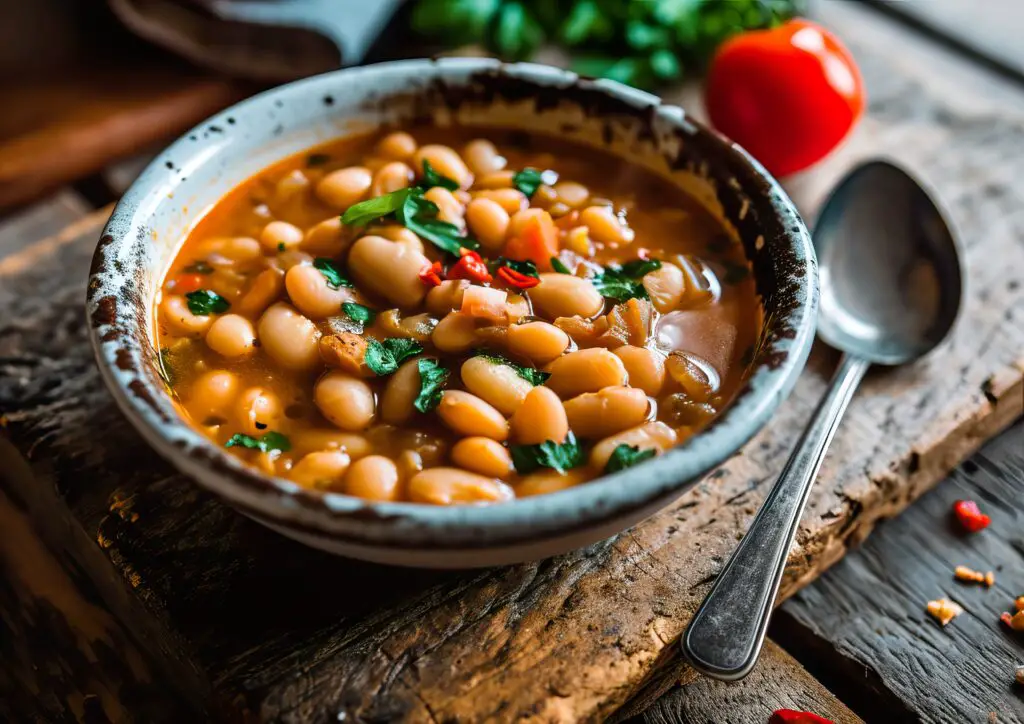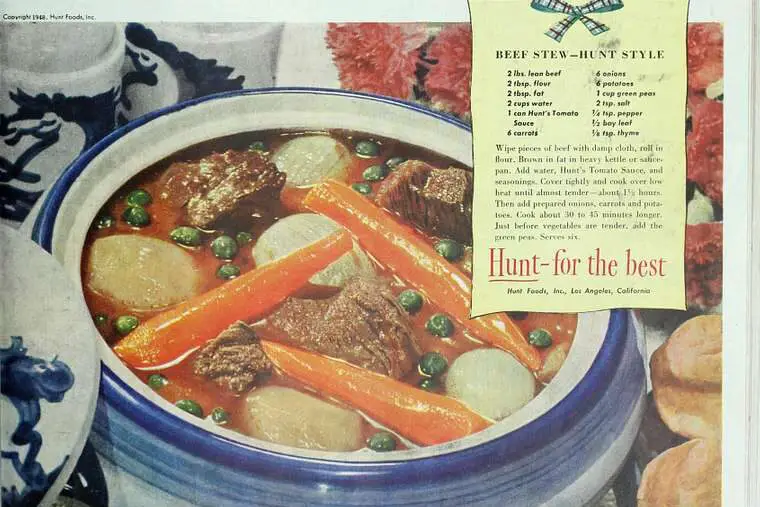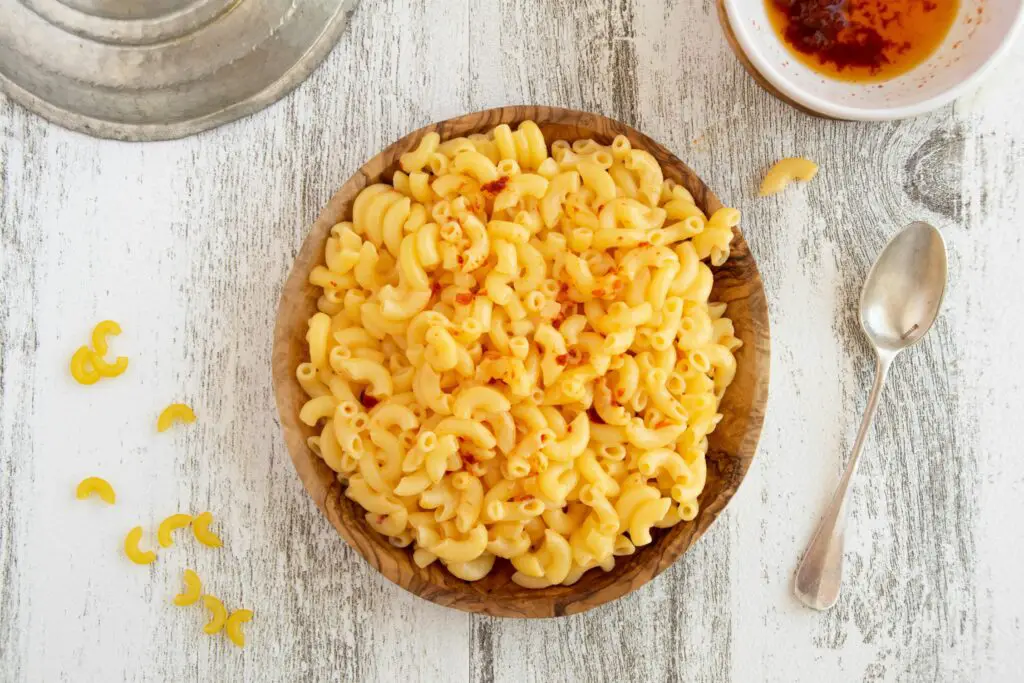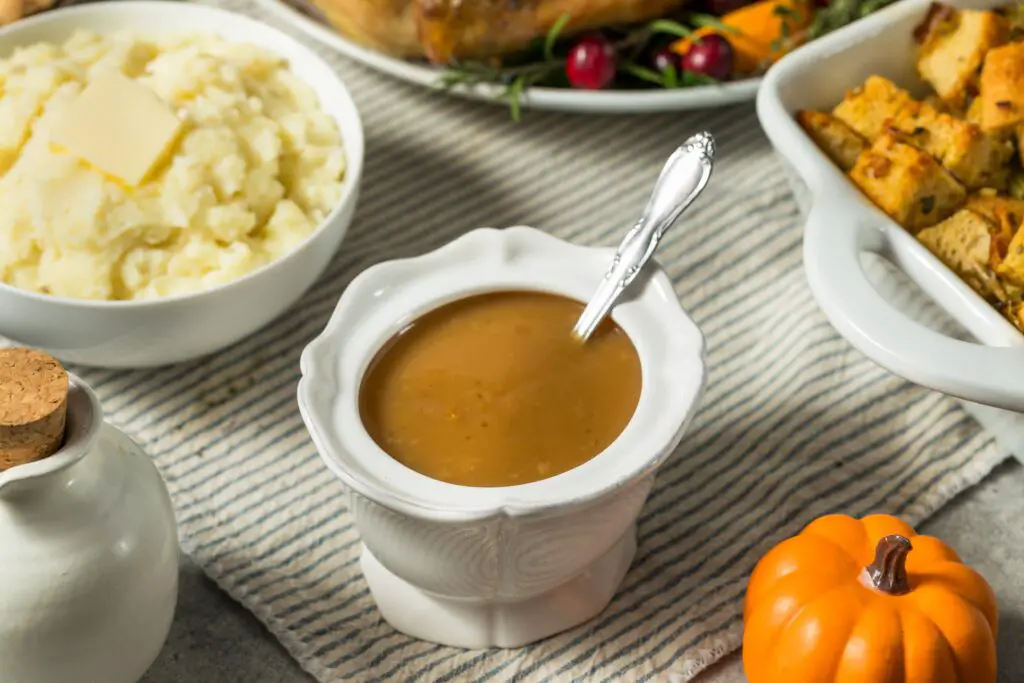1. Potato Soup

Potato soup is a humble dish that became a staple during the Great Depression, providing a filling meal at minimal cost. People relied on potatoes, a cheap yet hearty ingredient, to create something satisfying that could stretch for days. Often, it was made with just potatoes, water, and a few seasonings, making it a perfect example of frugality at its finest shares AllRecipes.
Today, this dish is making a return as many look for comfort food with simple, wholesome ingredients. Modern versions of potato soup may include cheese, bacon, or cream, adding richness and flavor, but the heart of the recipe remains the same: potatoes as the star of the show. Whether served with a slice of crusty bread or enjoyed on its own, it’s a reminder of how resourcefulness can turn a few basics into a nourishing meal adds the Pioneer Woman.
2. Cornbread

Cornbread was a favorite during the Depression, mainly because cornmeal was cheap and abundant. Families would bake it in cast-iron skillets, turning it into a satisfying side dish that complemented stews, soups, and beans. Its simplicity, made from cornmeal, baking powder, milk, and eggs, meant it could be made quickly with minimal ingredients says Wikipedia.
In recent years, cornbread has made a comeback as people seek out traditional comfort food. You’ll find it on restaurant menus and in home kitchens alike, often paired with chili or served as a snack with butter and honey. The golden crust and soft interior have made it a timeless favorite, proving that simplicity can indeed be delicious adds Love and Lemons.
3. Biscuits and Gravy

During the Depression, biscuits and gravy became a go-to breakfast in many households. Biscuits, made with flour, butter, and milk, were an affordable base for a rich gravy made from sausage or bacon drippings. This dish was both hearty and filling, making it a great way to start the day on a budget.
Today, biscuits and gravy are experiencing a revival, especially in the South and Midwest, where they’ve always been popular. Whether served in a diner or made at home, this dish continues to deliver the comfort and satisfaction it always has, with many people adding their own twists, like spicy sausage or vegetarian versions. It’s a nostalgic reminder of home-cooked meals that warm both the belly and the soul.
4. Bean Soup

Beans were a key ingredient during the Depression because they were inexpensive, nutritious, and filling. Bean soup became a go-to meal for families looking to stretch their food budget. A basic pot of beans, water, and salt could be turned into a hearty soup, often with the addition of leftover meat or vegetables to add flavor.
The bean soup trend is back in full force as people embrace plant-based meals and look for cost-effective, healthy options. Modern versions may feature different types of beans or include rich broths and seasonings, but the core of the dish remains unchanged. It’s a perfect example of how simple ingredients can create a comforting, flavorful meal.
5. Stew

Stews were a common way to use up leftovers and make the most of inexpensive cuts of meat during the Depression. A big pot of stew could feed a family for days, and the slow-cooked flavors made it an appealing, hearty option for dinner. The combination of vegetables, meat, and broth meant that nothing went to waste, and everyone was fed.
These days, stew is back on the menu as slow-cooker recipes gain popularity. With the resurgence of interest in slow-cooking, people are rediscovering the joy of stews made from scratch. It’s a great way to make use of inexpensive cuts of meat and fresh vegetables, turning them into a flavorful, satisfying dish.
6. Macaroni and Cheese

Macaroni and cheese became a Depression-era favorite because of its low cost and the fact that it could feed a family on a tight budget. The dish was typically made with just macaroni, milk, butter, and cheese, creating a rich and creamy comfort food that could stretch for many. It was a simple yet satisfying meal that could be whipped up quickly.
Today, macaroni and cheese is experiencing a huge revival, with many people adding new ingredients like bacon, truffle oil, or breadcrumbs for extra flavor and texture. From boxed versions to gourmet renditions, it remains a comfort food beloved by people of all ages. Its return to popularity is a testament to how something so simple can still hold a special place in our hearts.
7. Fried Chicken

Fried chicken was a Depression-era dish often made with inexpensive cuts of meat, seasoned and fried to crispy perfection. It was a way to take an affordable ingredient and turn it into something that felt indulgent. Families would gather around a fried chicken dinner, making it a rare treat that felt celebratory despite tough times.
Today, fried chicken has made a huge comeback, especially with the rise of fried chicken sandwiches and gourmet chicken joints. It’s a comfort food that transcends generations, whether it’s served with mashed potatoes, waffles, or simply eaten on its own. The crispy, golden-brown exterior and juicy meat inside are a reminder of the joy that comes with a simple, well-prepared meal.
8. Cabbage

Cabbage was a common vegetable during the Great Depression because it was affordable, easy to store, and could be used in a variety of dishes. It was often served in stews, soups, or simply sautéed with bacon or other inexpensive ingredients. Cabbage became a symbol of resourcefulness and creativity in the kitchen.
In recent years, cabbage has made a comeback, especially as people look to more affordable, plant-based options. It’s used in everything from coleslaw to stir-fries, and even as a substitute for tortillas in wraps. Its versatility, affordability, and nutritional value make it a perfect choice for today’s budget-conscious cooks.
9. Tater Tot Casserole

Tater tot casserole became a Depression-era favorite because it made use of simple, inexpensive ingredients and could feed a large family. The casserole typically combined ground meat, vegetables, and tater tots for a hearty and comforting meal. It was a great way to use leftovers and stretch a meal into multiple servings.
Tater tot casserole has made a comeback in recent years, especially as comfort food trends take over. It’s often made with ground beef, cheese, and creamy soups, but modern takes may include healthier ingredients like ground turkey or plant-based alternatives. Its nostalgic charm and satisfying taste have made it a popular choice for families looking to enjoy a hearty meal on a budget.
10. Gravy

Gravy became a Depression-era staple because it was an easy way to add flavor to otherwise plain meals, using ingredients that were readily available. People would make gravy from drippings or simple flour and water, creating a rich, flavorful sauce that could be used over meats, potatoes, or biscuits. It was an essential element of many Depression-era meals.
These days, gravy is seeing a resurgence, with different variations making their way onto restaurant menus. From classic brown gravy to rich sausage gravy, it’s a dish that brings a level of comfort and indulgence to any meal. Whether served over mashed potatoes or alongside turkey at Thanksgiving, gravy has found its way back into our kitchens as a beloved addition to many dishes.
11. Jello

Jello was a popular treat during the Great Depression because it was inexpensive and could be made in large batches. It was often served as a dessert or a snack, and its bright colors and jiggly texture made it a fun and refreshing treat for children. Families would also get creative, adding fruit or whipped cream to make it feel more indulgent.
Today, Jello is making a comeback, especially as retro recipes and nostalgic foods are enjoying a resurgence. It’s often used in party treats, layered desserts, or even salads, with new flavors and creative twists. The playful, nostalgic nature of Jello continues to make it a fun and lighthearted treat for both kids and adults alike.
12. Rice Pudding

Rice pudding became a comforting and affordable dessert during the Great Depression, as it could be made with just rice, milk, sugar, and a bit of cinnamon. It was a great way to use leftover rice, turning it into a sweet and satisfying treat that could feed a crowd. It was simple, filling, and provided a bit of sweetness during hard times.
Rice pudding is experiencing a revival, particularly as people seek out nostalgic desserts with simple ingredients. Today’s versions may include variations like coconut milk, vanilla, or even fruit for added flavor. It remains a beloved dessert, cherished for its creamy texture and comforting, homey feel.
